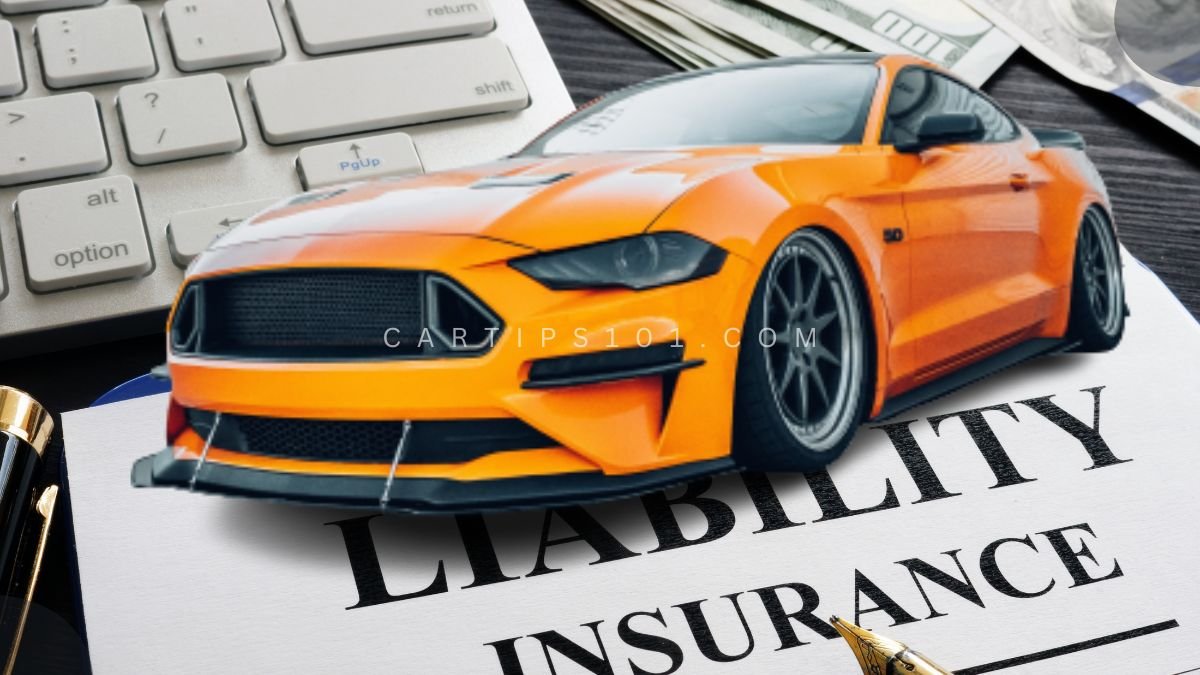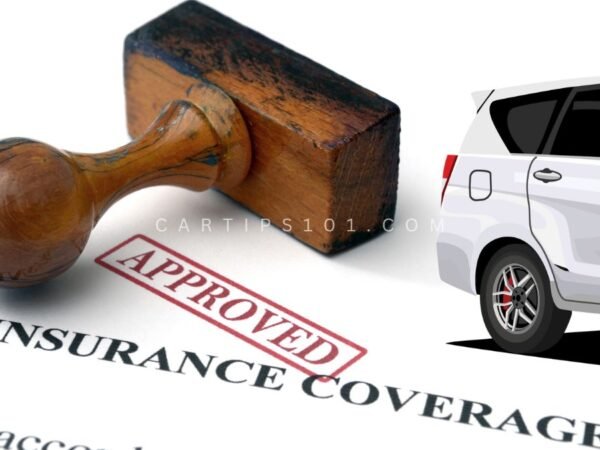When you finance a car, you might wonder about your insurance options, particularly liability insurance. Liability insurance is a type of coverage that can protect you financially if you cause an accident. It’s essential to understand how it works and what it covers, especially when your car is financed.
Understanding Liability Insurance on a Financed Car
Definition and Description
Liability insurance is a car insurance policy that covers damages and injuries to others if you’re at fault in an accident. It doesn’t cover damage to your own vehicle. When you finance a car, lenders often require you to have comprehensive and collision coverage, but liability insurance is usually required by law.
Elaboration
Even though liability insurance is not always mandatory for financed cars, it is crucial for protecting your finances. If you’re involved in an accident and are found liable, liability insurance helps cover the costs of damage or injuries to others. The amount of coverage you need may vary based on your state’s requirements and your personal financial situation.
Examples
For instance, if you cause an accident that results in $10,000 in damage to another vehicle, liability insurance can help cover those costs. If you don’t have liability insurance, you would be responsible for paying those costs out of pocket, which can be financially devastating.
Tips
- Check State Requirements: Ensure you meet your state’s minimum liability insurance requirements.
- Review Coverage Limits: Choose a coverage limit that protects your assets.
- Consult Your Lender: Verify if your lender has specific insurance requirements.
Table: Key Aspects of Liability Insurance on a Financed Car
| Aspect | Description | Example |
|---|---|---|
| Definition | Coverage for damages and injuries you cause to others | Covers other vehicle damage |
| Mandatory | Not always required for financed cars | Varies by lender |
| State Requirements | Minimum coverage limits set by law | $25,000 per person |
| Lender’s Role | May have specific insurance requirements | Lender may require additional coverage |
Importance of Liability Insurance
Liability insurance is essential for anyone who drives a car. Nearly every state mandates car liability insurance for legal driving. This type of insurance protects you against claims made by others for property damage or bodily injury in the event of an accident where you are at fault.
It's important to note that liability insurance does not cover your own injuries or damages to your property. Instead, it applies when you are legally responsible for someone else's damages. This coverage can help pay for legal fees and settlements if you are sued by the other party involved in the accident.
Types of Coverage Limits
Liability coverage limits are typically represented by three numbers, such as 25/50/25. These figures denote:
| Coverage Type | Amount Covered |
|---|---|
| Bodily Injury per Person | $25,000 |
| Bodily Injury per Accident | $50,000 |
| Property Damage per Accident | $25,000 |
For personal liability coverage, you typically choose one total limit that ranges from $100,000 to $500,000.
Liability insurance typically includes:
- Property Damage Coverage: Protects against damage to another person's property caused by your vehicle.
- Bodily Injury Coverage: Covers injuries sustained by another individual as a result of an accident.
By understanding these limits and types of coverage, you can make informed decisions about the protection you need when financing your car.
Car Finance and Insurance Requirements
When financing a vehicle, understanding the insurance requirements is vital. Lenders want to ensure their investment is protected, which means you may need to carry specific types of insurance coverage.
Insurance Requirements for Auto Loans
If you have an auto loan, your lender will likely require you to maintain comprehensive and collision coverage, in addition to liability coverage that is legally mandated. These requirements are often referred to as "full coverage" by lenders. Maintaining these coverages is crucial to protect both your vehicle and the lender's investment (Progressive).
| Coverage Type | Description |
|---|---|
| Liability Coverage | Covers damages to other vehicles and medical expenses for others if you are at fault in an accident. |
| Collision Coverage | Pays for damage to your vehicle, regardless of fault. |
| Comprehensive Coverage | Covers damage caused by non-accident events such as theft, vandalism, or natural disasters. |
Comprehensive and Collision Coverage
Lenders typically require collision and comprehensive insurance to safeguard their investment.
- Collision Coverage: This type of insurance pays for repairs to your vehicle after an accident, regardless of who is at fault. If you collide with another vehicle or a stationary object, this coverage ensures that your vehicle can be repaired without significant financial burden.
- Comprehensive Coverage: This protects against damages that occur from events other than accidents, such as theft, vandalism, or weather-related incidents. For instance, if a tree falls on your car during a storm, comprehensive coverage would help cover the repair costs.
Force-Placed Insurance
If you drop any required coverages before paying off your loan, the lender may purchase insurance on your behalf. This is known as force-placed insurance, and it tends to be more expensive than the insurance you would acquire independently. This insurance will be added to your monthly loan payments, which can significantly increase your financial burden (Progressive).
To avoid complications with your auto loan or potential repossession of your vehicle, make sure to adhere to the insurance requirements set forth by your lender.
Impact of Insurance on Financed Cars
When you finance a car, understanding the impact of insurance is crucial to protect both your investment and your financial obligations. This section will address two important aspects: force-placed insurance and the importance of full coverage.
Force-Placed Insurance
Force-placed insurance is a type of coverage that lenders may purchase on your behalf if you fail to maintain the required insurance on your financed vehicle. When you take out an auto loan, your lender typically mandates that you carry comprehensive and collision coverage, in addition to liability insurance (Progressive). If you drop these required coverages, the lender may step in and secure a policy for you, which will then be added to your monthly loan payments.
This type of insurance is often more expensive than the policy you could purchase on your own. It usually provides limited coverage and can be significantly costlier than maintaining your own insurance.
| Force-Placed Insurance | Description |
|---|---|
| Purpose | Protects lender's investment |
| Cost | Generally higher than self-purchased insurance |
| Coverage | Often limited, less favorable terms |
Importance of Full Coverage
Maintaining full coverage on a financed car is critical. Most lenders require you to carry a full-coverage auto insurance policy, which includes both collision and comprehensive coverage. This requirement is in place because the vehicle serves as collateral for the loan. If your car is stolen or totaled, having full coverage ensures that the lender can recover their investment, even if you no longer possess the vehicle.
Without full coverage, you may still be liable for paying off the loan amount for a car that you can no longer drive. This situation can create financial strain, as you would be responsible for the loan while lacking a vehicle.
| Full Coverage Components | Description |
|---|---|
| Collision Coverage | Covers damage to your vehicle regardless of fault |
| Comprehensive Coverage | Covers non-collision damage (theft, vandalism, weather) |
Not adhering to insurance requirements can lead to serious consequences like the cancellation of your auto loan or repossession of the vehicle if you are found to be in violation of your loan contract. It is essential to evaluate your insurance options carefully to ensure that you meet the necessary requirements while protecting your financial interests.
Liability Insurance vs. Full Coverage
Understanding the differences between liability insurance and full coverage is essential when financing a car. This knowledge will help you make informed decisions about your insurance options.
Differences in Coverage
Liability insurance primarily covers damages and injuries you cause to others in an accident. It includes two main components: property damage and bodily injury coverage. Property damage protects against damage to another person's property, while bodily injury covers injuries sustained by another individual in an accident caused by you (GEICO). Most states mandate liability insurance as a minimum requirement for legally driving a vehicle, and the required limits can vary by state.
On the other hand, full coverage generally refers to a combination of liability insurance, collision coverage, and comprehensive coverage. Collision coverage pays for damage to your vehicle, regardless of fault, while comprehensive coverage protects against non-collision-related incidents such as theft or weather damage. If you have an auto loan, lenders typically require you to maintain collision and comprehensive coverage to protect their investment (Progressive).
| Coverage Type | Liability Insurance | Full Coverage |
|---|---|---|
| Property Damage | Yes | Yes (through collision/comprehensive) |
| Bodily Injury | Yes | Yes (through liability) |
| Collision Coverage | No | Yes |
| Comprehensive | No | Yes |
Cost Comparison
The cost of liability insurance can vary based on the coverage limits you select. Higher coverage limits typically lead to increased premiums. Understanding these limits is crucial for safeguarding your financial security, as it determines the amount your insurer will pay for covered claims (GEICO).
Full coverage, while more comprehensive, tends to have higher premiums due to the inclusion of both collision and comprehensive coverages. It is important to weigh the benefits of full coverage against the higher costs, especially if your car holds significant value or if you are financing it.
| Insurance Type | Average Monthly Cost | Coverage Included |
|---|---|---|
| Liability Insurance | $50 - $100 | Property damage, bodily injury |
| Full Coverage | $100 - $200 | Liability, collision, comprehensive |
Consider your individual needs and financial situation when deciding on your insurance options. Lenders often require full coverage for financed vehicles, so be sure to review your auto loan agreement and comply with all requirements to avoid any potential issues.
Self-Insurance Considerations
Self-insurance is an option some drivers consider when evaluating their insurance needs, especially when financing a car. This approach can have significant implications for your finances, so it is essential to understand the factors involved in self-insuring both auto and homeowners insurance.
Self-Insurance for Auto Insurance
Self-insuring for auto insurance means you take on the financial responsibility for any damages or injuries instead of relying on a traditional insurance policy. This method can help you avoid paying insurance premiums, but it comes with considerable risks.
When you self-insure, you should be prepared for potential out-of-pocket expenses, which could reach tens of thousands of dollars or more if you cause significant harm to another person or their property. Most states require drivers to maintain at least minimum levels of auto liability insurance. Before choosing to self-insure, confirm that this decision meets any legal requirements in your state and obligations from your lender.
| Expense Type | Estimated Cost |
|---|---|
| Minor Accident | $1,000 - $5,000 |
| Moderate Accident | $5,000 - $15,000 |
| Severe Accident | $15,000 - $50,000+ |
Self-Insurance for Homeowners Insurance
Self-insurance for homeowners insurance is similar in concept. It involves covering potential damages to your home and belongings out of pocket rather than through a traditional insurance policy. This approach is often more feasible for individuals who have substantial savings to cover potential rebuilding costs and replacement of damaged items (Bankrate).
The financial implications of self-insuring a home can be significant. If your house is destroyed, you should have enough funds to cover both the rebuilding costs and the loss of personal belongings. This option is generally better suited for those with considerable assets and savings.
| Damage Type | Estimated Rebuilding Cost |
|---|---|
| Minor Damage (e.g., roof) | $5,000 - $15,000 |
| Moderate Damage (e.g., fire) | $15,000 - $50,000 |
| Total Loss | $100,000+ |
Understanding the implications of self-insurance in both auto and homeowners insurance is crucial for making informed financial decisions. Evaluate your financial situation, risk tolerance, and the requirements imposed by your state or lenders before proceeding with self-insurance.
Decision-Making on Insurance Options
When it comes to choosing the right insurance for your financed car, various factors come into play. Understanding these elements can help you make an informed decision that aligns with your financial needs and legal obligations.
Factors Influencing Insurance Choices
Several factors influence your decision on what type of insurance coverage to select for your financed vehicle. Here are some key considerations:
| Factor | Description |
|---|---|
| Legal Requirements | Nearly every state mandates that drivers carry car liability insurance. The minimum levels of coverage can vary significantly from state to state (Progressive). |
| Loan Requirements | If you have a loan or lease on your car, your lender will likely require you to carry full coverage, which includes comprehensive and collision insurance, in addition to liability. |
| Personal Financial Situation | Consider your budget and how much you can afford in premiums. Higher coverage may offer better protection but could also increase your monthly costs. |
| Vehicle Value | The age and value of your car can influence how much coverage you should carry. Newer, more valuable vehicles often require more comprehensive coverage. |
| Driving Record | A clean driving record may qualify you for lower premiums, while a history of accidents or claims could lead to higher costs. |
State Requirements and Lender Mandates
Understanding state requirements and lender mandates is crucial when financing a car. Most states require a minimum level of liability insurance to legally operate a vehicle. The required limits differ from one state to another, making it essential to verify local laws (GEICO).
| State | Minimum Liability Coverage |
|---|---|
| California | $15,000 per person / $30,000 per accident |
| Texas | $30,000 per person / $60,000 per accident |
| New York | $25,000 per person / $50,000 per accident |
| Florida | $10,000 per person / $20,000 per accident |
In addition to state requirements, lenders typically require you to have comprehensive and collision coverage on financed vehicles. This "full coverage" helps protect both you and the lender's investment in the car. Lenders may also mandate additional coverages, such as uninsured motorist coverage or gap insurance, to further safeguard against unexpected situations.
By considering these factors, you can better navigate the complexities of choosing the right insurance for your financed car, ensuring that you meet both legal and financial requirements while also protecting your investment.
Final Thoughts on Liability Insurance for Financed Cars
Why Liability Insurance on a Financed Car is Essential
Liability insurance provides vital protection if you're responsible for an accident. While it might not be mandatory for financed vehicles, it’s crucial for safeguarding your finances and meeting legal obligations. Always check with your lender and state laws to ensure you have adequate coverage.
FAQs about Liability Insurance on a Financed Car
Q: Is liability insurance required for a financed car?
A: Liability insurance is not always required for financed cars, but it's often required by state laws. However, lenders may require you to have additional coverage beyond liability, such as comprehensive and collision coverage. Always check your lender’s requirements and state laws.
Q: How does liability insurance differ from comprehensive insurance?
A: Liability insurance covers damages and injuries to others if you're at fault in an accident. Comprehensive insurance, on the other hand, covers damage to your own vehicle due to non-collision events like theft, vandalism, or natural disasters.
Q: What are the minimum liability insurance requirements?
A: Minimum liability insurance requirements vary by state. For example, some states require $25,000 in coverage per person for bodily injury and $50,000 per accident. It's important to check your state's specific requirements.
Q: Can I choose higher liability coverage limits?
A: Yes, you can choose higher liability coverage limits if you want more protection. Higher limits can protect your assets better in case of a serious accident.
Q: What happens if I don’t have liability insurance on a financed car?
A: If you don’t have liability insurance, you risk facing significant financial consequences if you cause an accident. Additionally, you may face legal penalties and your lender may enforce their own insurance requirements.
Q: How do I know if I need additional coverage for my financed car?
A: Review your loan agreement and consult with your lender to understand their insurance requirements. Also, consider your personal financial situation and potential risks to decide if additional coverage is necessary.
Image Source: Paid image from CANVA





